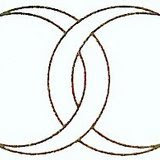Several sites in Ireland are especially linked to Samhain. A host of otherworldly beings was said to emerge from Oweynagat ("cave of the cats"), near Rathcroghan in County Roscommon, each Samhain.[24] The Hill of Ward (or Tlachta) in County Meath is thought to have been the site of a great Samhain gathering and bonfire;[16] the Iron Age ringfort is said to have been where the goddess or druid Tlachta died, giving birth to triplets that resulted from rape.
In The Stations of the Sun: A History of the Ritual Year in Britain (1996), Ronald Hutton writes: "No doubt there were [pagan] religious observances as well, but none of the tales ever portrays any". The only historic reference to religious rites is in the work of the "thoroughly unreliable" Geoffrey Keating (died 1644), who says that the druids of Ireland would gather on Tlachta on Samhain night to kindle a sacred fire. However, his source is unknown. Hutton says it may be that religious rites aren't mentioned because, centuries after Christianization, the writers didn't know what they had been.[12]
The idea that, in Old Irish literature, Samhain is particularly associated with the supernatural is due to Jeffrey Gantz and others. Hutton criticizes this as unfounded; he argues that the gatherings of royalty and warriors on Samhain are simply an ideal setting for such tales in the same way that many Arthurian tales of are set at courtly gatherings at Christmas or Pentecost.[25]








No comments:
Post a Comment